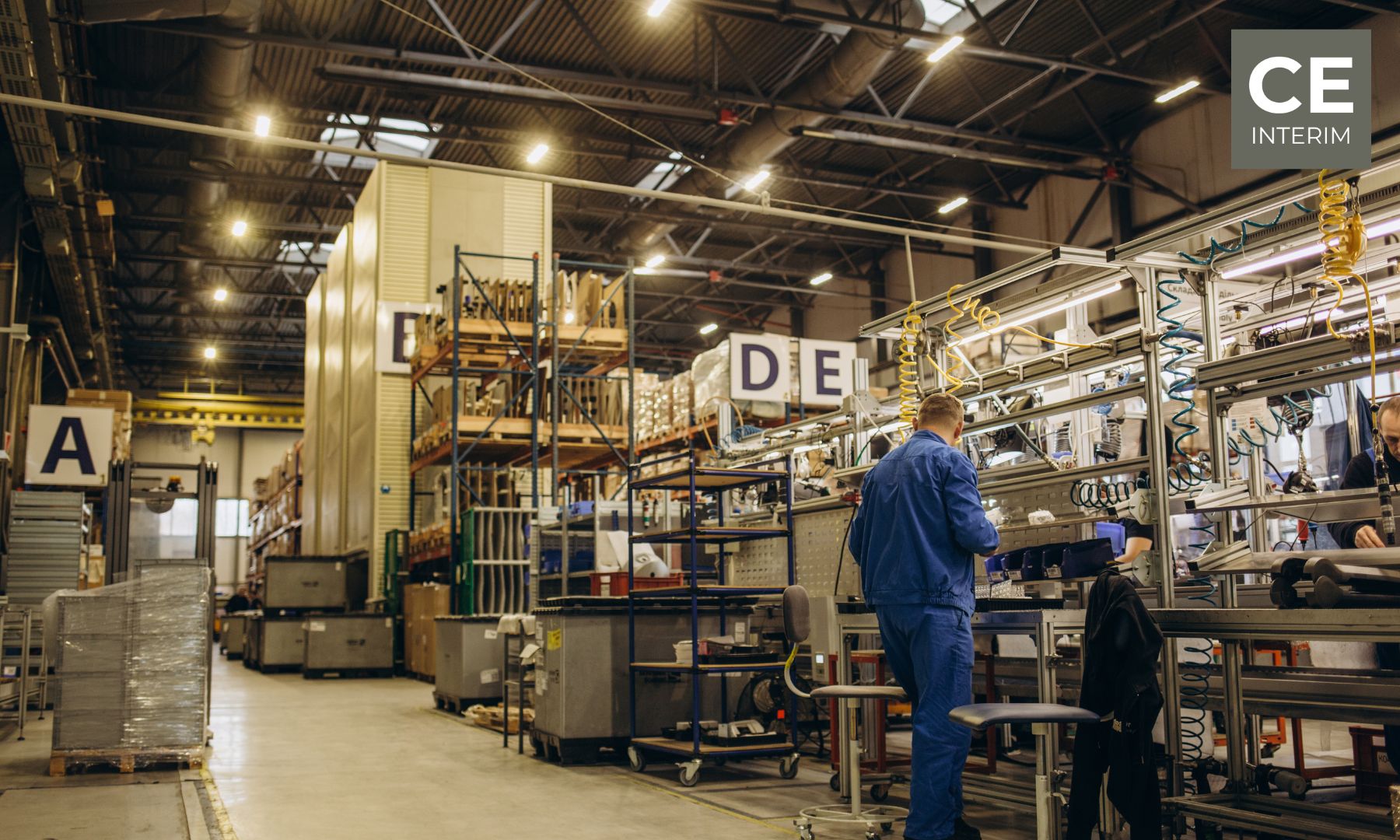Nemáte dosť času na prečítanie celého článku? Vypočujte si zhrnutie za 2 minúty.
Premiestňovanie továrne môže byť zdĺhavé a únavné. Našťastie si tento proces môžete zjednodušiť, ak budete postupovať podľa príručky Presťahovanie továrne - čo robiť a čo nerobiť alebo ak budete mať správneho partnera, ako napr. CE Interim po vašom boku. Pri správnom postupe sa to môže ukázať ako najlepšie rozhodnutie pre vaše podnikanie. Ak nie je urobené správne, spoločnosti sú vystavené zbytočne vysokým výdavkom, prestojom a brzdeniu rastu.
Mnohé spoločnosti sa presúvajú do strategických lokalít, ako sú východná Európa, Balkán, Ázia a regióny Blízkeho východu, ktoré ponúkajú nižšie prevádzkové náklady, kvalifikované talenty, priaznivé predpisy a podmienky a ďalšie kľúčové výhody.
Ak aj vaša spoločnosť plánuje presťahovať závod alebo logistiku do inej lokality, či už do nového regiónu alebo domoviny, tento príspevok je určený práve vám.
V dnešnom blogu vám vysvetlíme, aké sú najdôležitejšie zásady a odporúčania pri sťahovaní do továrne, ktoré vám pomôžu zabezpečiť bezproblémový proces. Začnime!
Čo je premiestnenie továrne a prečo je potrebné?
Premiestnenie továrne je taktický obchodný proces, pri ktorom spoločnosť presúva svoju výrobnú jednotku z jednej geografickej lokality do druhej. Účelom tohto presunu je využiť výhody, ktoré ponúka nové miesto, na zlepšenie prevádzkovej efektívnosti, zjednodušenie dodávateľského reťazca, zníženie nákladov a nakoniec na oživenie podnikania.
Existujú dva typy premiestnenia závodu:
- Off-shoring
- Re-shoring
Offshoring sa vzťahuje na presun výrobného závodu do inej krajiny, zatiaľ čo reshoring je proces návratu výroby do domovskej krajiny spoločnosti.
Krajiny ako Slovensko, Poľsko, Maďarsko, Rumunsko a Srbsko ponúkajú kľúčové výhody, ako sú lacné zdroje a pracovná sila, kvalifikované talenty a priaznivé podnikateľské prostredie, ktoré pomáhajú spoločnostiam fungovať hladko a efektívnejšie. Preto spoločnosti presúvajú svoje továrne do týchto regiónov.
Dávky z premiestnenia továrne
Tu sú Dos pred, počas a po premiestnení továrne na strategické miesto:
1. Dôkladné plánovanie a strategické plánovanie
Vaša spoločnosť by mala venovať dostatok času úplnému naplánovaniu procesu. Čím viac času venujete strategickému plánovaniu a posúdeniu rizík, tým väčšie budú vaše šance na úspešný prechod.
Je tu obrovské množstvo faktorov, ktoré musíte zvážiť a ktoré si vyžadujú dostatok času na riešenie. Môžete tiež zostaviť harmonogram a stanoviť míľniky prechodu, aby ste zabezpečili presun strojov a zariadení tak, aby došlo k čo najmenším prestojom. Preto by ste mali tento proces prenechať profesionálom.
2. Urobte si komplexnú analýzu nákladov
Aby ste mohli správne odhadnúť všetky potenciálne náklady spojené s premiestnením, ako sú náklady na nehnuteľnosti, dopravu, inštaláciu, nábor zamestnancov atď. Možno budete musieť tiež motivovať svojich zamestnancov za dodatočné úsilie, ktoré vynaložia počas celého procesu.
Okrem toho sa pri plánovaní sťahovania musíte zamerať na skryté náklady, ako sú prestoje, premiestnenie zamestnancov a narušené obchodné procesy. Je múdre si uvedomiť, že presťahovanie prevádzky a očakávanie úspory nákladov od prvého dňa je cesta nikam
3. Včasné zapojenie kľúčových zainteresovaných strán
Zapojenie kľúčových zainteresovaných strán od začiatku pomôže zabezpečiť bezproblémový prechod vašich činností z jedného miesta na druhé. Mali by ste zaviesť účinné komunikačné stratégie, aby ste všetkých informovali a predišli nepredvídaným okolnostiam.
4. Výber takticky správneho miesta
Musíte si vybrať správne miesto na premiestnenie svojej výrobnej jednotky. Na to je potrebné posúdiť všetky faktory spojené s presunom, overiť si, čo vaše podnikanie vyžaduje, a zostaviť užší zoznam niekoľkých lokalít, ktoré spĺňajú tieto požiadavky.
Zamerajte sa na infraštruktúru, pracovný trh, predpisy a daňové pravidlá, prevádzkové náklady a ďalšie relevantné faktory, aby ste si vybrali ideálne miesto. Krajiny vo východnej Európe a na Balkáne sa v poslednom čase ukázali ako strategicky najvhodnejšie možnosti pre podniky vďaka priaznivým predpisom, kvalifikovanej pracovnej sile, nižším prevádzkovým nákladom a blízkosti kľúčových trhov.
5. Zabezpečenie súladu s právnymi a regulačnými požiadavkami
Pred definitívnym výberom miesta na presťahovanie je veľmi dôležité poznať miestne zákony a predpisy. Následne by ste mali zabezpečiť súlad vašej spoločnosti s nimi, aby ste sa vyhli právnym prekážkam a nástrahám.
Mali by ste sa tiež poradiť s miestnymi odborníkmi, aby ste si boli vedomí predpisov. Okrem toho v každom regióne existujú určité nevypovedané pravidlá kultúrnej udržateľnosti, ktoré by ste nemali ignorovať.
6. Vypracujte spoľahlivý plán riadenia rizík
Včasná identifikácia potenciálnych rizík a prekážok a zavedenie vhodných stratégií na ich zmiernenie vám pomôže hladko dokončiť prechod. Nepredvídané okolnosti sú neodvratné, pretože presťahovanie továrne je únavný proces.
Musíte mať pohotovostný plán, napríklad požiadať o pomoc dočasných odborníkov, najmä ak vaša spoločnosť prechádza krízou.
7. Udržujte jasnú a otvorenú komunikáciu
Musíte vytvoriť a dodržiavať jasné komunikačné stratégie so zamestnancami, dodávateľmi a zákazníkmi, aby ste sa vyhli možným nedostatkom, rizikám a prekážkam. Zachovanie transparentnosti a poskytovanie pravidelných informácií všetkým, najmä kľúčovým zainteresovaným stranám, je pre prechod kľúčové.
8. Minimalizácia prevádzkových porúch s cieľom skrátiť prestoje
Mali by ste vytvoriť plány zamerané na minimalizáciu narušenia prevádzky, pretože vám to pomôže udržať výrobu počas prechodu a vyhnúť sa vysokým výpadkom. Prístup založený na postupnom premiestňovaní a záložných plánoch môže byť účinným spôsobom, ako riešiť narušenia, znížiť prestoje a zabrániť finančným stratám.
9. Vykonajte preskúmanie po premiestnení
Po dokončení premiestnenia je nevyhnutné vyhodnotiť jeho úspešnosť, identifikovať vznikajúce problémy a včas ich vyriešiť. Musíte posúdiť oblasti, ktoré je potrebné zlepšiť, a predložiť plány na odstránenie nedostatkov.
10. Najmite profesionálneho dočasného manažéra so skúsenosťami s premiestňovaním tovární
Najatie profesionálneho dočasného manažéra s rozsiahlymi skúsenosťami s presťahovaním závodu je strategické rozhodnutie, ktoré môže výrazne ovplyvniť úspech vášho presunu. Hľadajte spoločnosť, ktorá má preukázateľné skúsenosti so zvládaním komplexných presťahovaní priemyselných podnikov, ako aj overený súbor talentovaných odborníkov z odvetvia, ktorí prinášajú bohaté znalosti a praktické skúsenosti.
Dokážu vypracovať vlastné stratégie sťahovania prispôsobené jedinečným požiadavkám vašej spoločnosti a zabezpečiť, aby bol každý aspekt sťahovania starostlivo naplánovaný a vykonaný. Od koordinácie logistiky a riadenia časového harmonogramu až po dohľad nad demontážou, prepravou a opätovnou inštaláciou zariadení dokážu zabezpečiť minimálne narušenie vašej prevádzky.
Ich schopnosť predvídať potenciálne problémy a zavádzať proaktívne riešenia pomáha zmierňovať riziká, zatiaľ čo ich vedenie zabezpečuje, že všetci členovia tímu sú zosúladení a zameraní na dosiahnutie bezproblémového prechodu. Profesionálni manažéri premiestňovania dokážu premeniť náročnú úlohu premiestňovania závodu na zjednodušený a efektívny proces, čím v konečnom dôsledku zabezpečia kontinuitu vášho podnikania a prevádzkovú efektívnosť.
Nedopustite sa premiestnenia továrne
Tu je zoznam odporúčaní, ktoré musíte dodržiavať počas procesu premiestnenia továrne
1. Neponáhľajte sa s plánovaním
Pri premiestňovaní továrne na iné miesto sa nikdy nesmiete unáhliť, pretože sa tým zvyšuje pravdepodobnosť potenciálnych rizík, dochádza k nadmernému narušenie prevádzkya zbavuje vás času na zváženie všetkých podstatných faktorov.
2. Nepodceňujte náklady
Nikdy nepodceňujte náklady, ktoré sa pri sťahovaní továrne bežne prehliadajú. Komplexný rozpočet spolu s finančnými prostriedkami na nepredvídané udalosti vám môže pomôcť dokončiť prechod bez problémov.
3. Neignorujte obavy zamestnancov
Presťahovanie továrne má veľký vplyv na zamestnancov a je prirodzené, že sa u nich objavujú obavy. Nikdy by ste ich nemali ignorovať, dodržiavať jasnú a otvorenú komunikáciu a mať zavedený podporný program.
4. Nezanedbávajte aspekty dodávateľského reťazca
Premiestnenie továrne bude mať kľúčový vplyv na váš dodávateľský reťazec a mali by ste zvážiť súvisiace faktory. Mali by existovať stratégie na zachovanie vzťahov s dodávateľmi a efektívnosti logistiky, a ak sa zanedbajú, dôjde k narušeniu prevádzky.
5. Nezabudnite na aktualizáciu IT infraštruktúry
Váš plán presťahovania by nemal ignorovať dôležitosť aktualizácie IT infraštruktúry podľa nového miesta. Je nevyhnutné zabezpečiť bezpečnosť údajov a kontinuitu systému počas sťahovania.
Týmto končíme našu príručku o tom, čo robiť a nerobiť pri premiestňovaní továrne
Záverečné slová
Toto sú kľúčové zásady, ktoré by vaša spoločnosť mala dodržiavať pri premiestňovaní závodu. Starostlivé plánovanie, komunikácia a riadenie rizík môžu zabezpečiť úspešný prechod a zachovať prosperitu vašej prevádzky.
Strategické plánovanie a realizácia môžu vašej spoločnosti pomôcť získať maximálne výhody z premiestnenia. Nie je však ľahké dosiahnuť úspešné sťahovanie bez toho, aby ste sa rozhodli pre profesionálnu pomoc.
Keď ide o premiestnenie továrne do východnej Európy, CE Interim je partner, na ktorého sa môžete spoľahnúť. Náš tím odborníkov ponúka kompletné komplexné riešenia, vďaka ktorým je celý proces hladký a bezstarostný. Postaráme sa o každý detail, aby ste sa mohli naďalej sústrediť na svoje podnikanie.
Nechajte naše riešenia na mieru zabezpečiť úspech vášho presťahovania. Kontaktujte nás ešte dnes a zistite, ako vám môžeme pomôcť so sťahovaním továrne.





